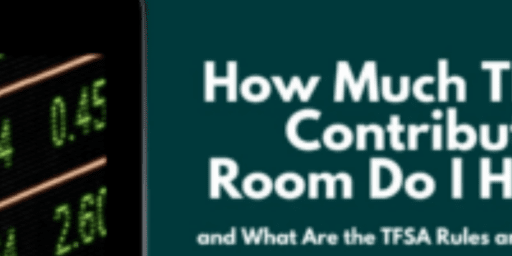How to Invest With Little to No Money
If you are like many soon to be investors, you might have an idea of how you would like to invest and grow your wealth. However, you might be hesitant to start if you don’t have a large sum of money on hand to invest.
Luckily for you, there are a number of ways you can invest with little money. We’re talking as little as $1.
Let’s take a look at how you can go from $0 to a financially secure future.
How Can I Start Investing With Little Money?
Long gone are the days where you need to hire an expensive fund manager to help you make investment decisions. Technology has democratized investing, and now you can begin investing with very little capital.
Starting off with as little as $10 can help you grow wealth. While this might not seem like a lot, learning about how to invest money for beginners is an important step. By consistently investing even a small amount, you will create a habit, as well as see first hand that there are in fact small investments that make money.
If you have 20-30 years to invest and watch compound interest work its magic, you will reap the rewards.
Let’s take that $10 a month as an example. That’s about 2 specialty coffees worth of cash. If you invested $10 per month for 30 years, a total of $3,600, at a yield of 8% interest, you could potentially grow that amount to $14,186! Now think if you could eventually turn that $10 into $100 per month, then $1,000 per month. Now we are talking about real money for retirement.
Maximize Your RRSP
One of the best ways to start investing with no money is to make use of your RRSP. An RRSP is a Registered Retirement Savings Plan, in which contributions and earnings made while your money is growing in your RRSP will not be taxed.
You can start by automatically investing 1% of your income to an RRSP. Since the deduction can be made automatically, you won’t even need to think about it. 1% is so small, you likely won’t even miss it. Once you are comfortable, you can increase your automatic contributions to 2% then 3%, until you hit you max out your RRSP.
A number of employers offer matching contributions up to a certain amount to your RRSP account as a work benefit. That’s essentially free money!
If you would like to learn more about how you can start investing with your RRSP, and how you can use it to make your first million, check out our article on Building a $1,000,000 RRSP Starting in Your 30s, 40s and 50s.
Invest With Fractional Shares
You might ask, “Is it worth investing small amounts of money?” The answer is yes! Remember how that $10 per month turned into $14,186? As with many things in life, when applied consistently, a little extra becomes a lot.
Fractional share investing is a great way to start with as little as a few bucks. Fractional shares are as the name implies, a fraction of a share. So, while you might not have the money to invest in an entire blue chip stock, you can still own a fraction of a stock.
Luckily for us here In Canada, Wealthsimple Trade has made it possible to invest in fractional shares. An added bonus is that It is free to trade on their platform. This means you can own a little slice of Amazon, Google and Apple stock all for as little as $1.
Low-Cost ETFs
ETFs, or Exchange-Traded Funds offer investors a basket of actively managed funds for one low price. ETFs are a great way to diversify your portfolio in a hassle free way. Not only is it easy to do, with online discount brokerages like Qtrade, you can buy and sell ETFs at no cost to you.
Traditional ETFs offer investors a way to purchase multiple stocks all wrapped up in one fund. There are ETFs that track the S&P 500, those that are made up of socially responsible companies, and those that represent different sectors, like technology and real estate.
The iShares Core S&P/TSX Capped Composite Index ETF is a small investment that could have big returns for Canadians, and is currently selling at $29.16.
Portfolio ETFs offer an even broader range of investments, being a fund of multiple ETFs. For example, you can currently purchase one share of Vanguard Growth ETF Portfolio, which allows you to invest in thousands of companies for the low price of $26.86.
REITS, or Real Estate Investment Trusts are similar to ETFs, but focus solely on real estate. This is a great way to further diversify your portfolio with real estate assets without having to put away tons of cash for a down payment on a house or apartment.
If you start by making even one trade per month, it will cost you less than a family trip to the movies.
Robo-Advisors
Another way to invest with little money is by using a robo-advisor service. For some, the idea of actually investing is more intimidating than saving a few extra bucks per month. Don’t let that happen to you!
With the help of a robo-advisor, you will have an investment portfolio tailored to your needs and goals, no matter what your budget is. It is a great way for investing money for beginners.
Many Canadian brokerages offer a robo-advisor service with no minimum balance requirement, including Wealthsimple, CI Direct Investing, RBC InvestEase and Qtrade Guided Portfolios.
Wealthsimple in particular is very easy to use with a simple and intuitive interface that will help you start investing with their robo-advisor service in no time. You can find out more about it over at our Wealthsimple review.
Once you have selected your preferred platform, chosen your strategy, and funded your account, the robo-advisor will automatically purchase funds based on your investment strategy. Your account will also be automatically rebalanced, so you can really just set it and forget it.
Keep in mind that rob-advisor services will not be free. The fees for a robo-advisor service will be a bit higher than a purely DIY brokerage account, ranging from 0.4%-0.8%. You are paying for peace of mind, but it will take a bite out of your earnings.
Check out more on the Best Canadian Robo Advisors and find out how they will help you make smart investment choices with little money to start.
GICs
Another way you can start investing with little money is by setting your money aside in what is called a Guaranteed Investment Certificates, most commonly referred to as GICs.
Basically how it works is that you park your money in a GIC for a specific amount if time, and in return you will earn interest on your principal amount. Right now in Canada, GIC rates are great, fetching you up to an impressive 5% return on a 5 year GIC.
What is great about GICs, in addition to the guaranteed return, is that they pose very little risk. GICs are insured by the Canadian Deposit Insurance Corporation, adding an extra layer of safety.
GICs also offer a lot of flexibility in the terms, which can range anywhere from 3 months to 10 years.
We break down the Best GIC Rates in Canada in our full article if you would like to learn more.
Peer-to-Peer Lending
Peer to Peer lending is another one of the more risky options when it comes to investing, but it can help you to invest with little money, and if you are creative, it can help you invest with no money.
Peer-to-peer lending is made possible in Canada by platforms such as Lending Loop and goPeer. This is how it works: People looking for personal or business loans will go through an application process on the platform, and if approved, investors can choose whom to loan money to. If successful, the borrower will begin making repayments with interest each month.
So, if you are looking for the best way to invest $1,000 in Canada, this could be it. You can help someone grow their business all while getting money in the bank each month until the loan is paid off.
Don’t have $1,000? No problem! goPeer allows you to invest as little as $10 per loan.
If you want to invest with no money, there is another option similar to peer-to-peer lending, which is to invest your time and talents into a business to help it grow, earning you sweat equity, or shares of the business in return for the work you put in. This can be a great option if you don’t have any cash, but see the potential a local business has.
Just make sure to consult a lawyer, and make sure any agreement you might make with the company owner is legal so there aren’t any issues down the line.
High Interest Savings Accounts
High interest savings accounts, or HISAS, can at the very least help protect you against inflation, which is currently at an all time high. If you have been socking a bit of money away so you have a larger chunk to invest when you are ready, please do not simply let it sit in a chequing account.
A high interest savings account will reward you by paying you interest on the money in the account. Right now in Canada, HISA rates are actually pretty decent, ranging from .4% to 3%.
Check out our list of the Best High Interest Savings Accounts to help you find the best rate, so you can start earning money without having to invest it.
Not ready to start investing big bucks for the long term quite yet? We’ve got more details on high interest savings accounts, GICs and more in our full article on the Best Short Term Investments in Canada.
When Is the Right Time to Start Investing?
The right time to start investing was yesterday, but today isn’t too late! The sooner you begin investing, the longer your money has to grow. Remember, the magic of compound interest is powerful, and given the right amount of time, your seemingly small investment will earn a big return.
Investing is not something only for a select group of people in the know. It is for everyone, thanks to the platforms and tools available to us online. If you are wondering how to invest if you’re poor, there is a way! If you have $1, you can be an investor in minutes.
Investing While Still In Debt
Some people believe in waiting until they are completely debt-free to start investing. While this might seem like good advice, it’s important to understand that not all debt is created equal.
Mortgages and student loans generally have a lower interest rate, and can even be considered as good debt. So, if that is the type of debt you have, generally speaking you can start investing at the same time as paying off the good debt in your life. Just make sure the amount you invest allows you to make at least the minimum payment on your loans.
However, if your debt comes in the form of high interest car loans, line of credit or credit card debt, then the best thing you can do for your financial health is to pay those debts off as quickly as possible. If you have high interest debt, any interest you would earn on investments is negated.
Once the balances are lower and the interest payment is manageable, then it would be a good time to start investing.
Other Tips to Start Investing With No Money
One of the most important steps towards financial freedom is creating a budget and tracking your spending. There are lots of apps that can help you do just that! Check out our list of the Best Budgeting Apps for Canadians.
Sometimes we feel like we have no money, and the stress of trying to come up with money for investment makes the whole thing feel overwhelming.
This is when using a micro-investing app such as Moka can help you grow your investment using your spare change.
How it works is first, you link your bank account to the Moka app. Next, make a purchase, and Moka will automatically round up your purchase and invest your spare change into a managed portfolio.
Another way you can start investing with little money is by setting up direct deposits that automatically transfer a set amount of money from your bank account to your investment account each pay day. This way, you won’t be tempted to spend the money instead of invest it.
You can start with a small percentage of your take home pay. Then, when it’s time for a raise, instead of buying something you don’t need, invest the same amount as your pay has increased. Your quality of life won’t be negatively affected because it’s what you had been living on comfortably before.
Our final tip is that if your budget has revealed that you do, in fact, need to make extra money to start investing, there are plenty of ways to do so. Head over to: Can Side Hustles Actually Make Me Money? where our guest blogger shares some ideas on how you can start your very own side hustle to jumpstart your investment journey.
Small Money Investments in Canada – FAQ
Summary
It might be surprising that Canadians can invest with little to no money. With so many great online brokerages available, there has never been a better time to start.
The fact is that no matter how much or how little you have to invest, the sooner you start, the more rewards you will reap.
Whether you decide to invest in the stock market, real estate via REITs, engage in peer-to-peer lending or just park your savings in a high interest savings account, there is a way to capitalise on the cash you already have, no matter how much or how little it is.
If you are ready to start your investment journey today, we recommend Qtrade as the best online brokerage to help you on your way. Find out why it’s our number 1 pick for investors in Canada in our full Qtrade Review.











I wanted to add that Wealthsimple has a Roundup feature on their managed accounts, which does the same thing as MOKA, investing your spare change by rounding up your purchases on debit and credit cards and then investing the change for you weekly.